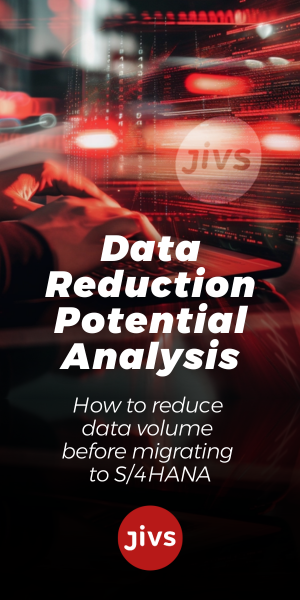Managing enterprise data independently from its core application has been a utopian dream for many SAP leaders. However, that dream is becoming a necessity, with pressure mounting from boardrooms and global regulators alike.
So, what has changed? On one hand, hyperscalers offer seductive cloud platforms that simplify operations but quietly pave the way for vendor lock-in, making it painfully difficult to retrieve data, which is the most valuable asset for an organization. On the other hand, a shifting geopolitical landscape introduces complex data sovereignty laws in countries like China and India, which demand that local data remain within the country and be updated daily.
This push-and-pull creates a strategic nightmare, especially for SAP S/4HANA migrations, and it raises the question: How can organizations embrace cloud agility while simultaneously ensuring compliance and avoiding vendor dependency?
Beyond Faster Migrations
We have previously explored how Data Migration International’s (DMI) JiVS IMP platform accelerates SAP S/4HANA projects by reducing data migration volumes by up to 90% and enabling the clean retirement of systems. However, what about the terabytes in those few, massive tables that still need to move? How do organizations keep historical data perfectly in sync without complex, time-consuming batch jobs right before cutover?
Here’s where the strategy shifts from one-time migration to continuous resilience with DMI’s new Data Replication Service (DRS), a component of DMI’s Central Business Technology Layer (CBT). It is situated between the One Click Transformation Cockpit (JiVS OCC) and the JiVS IMP platform. DRS is part of CBT’s standard functions and plug-ins, which include AI capabilities and workflows.
This extension of the JiVS IMP platform is integrated into the organization’s SAP ECC or SAP S/4HANA system. Moreover, DRS is an online, real-time replication engine. Through a simple configuration, it enables organizations to ensure that select tables are constantly and automatically updated in the JiVS IMP repository.
Integrating Historization into the Project
This new capability also fundamentally reframes the role of data historization within a migration strategy. Traditionally viewed as a post-migration clean-up task, historization is now integrated into the project from the very start.
With DRS, the process of creating a revision-safe, legally compliant archive runs parallel with the main transformation effort. The result is that when an organization goes live on SAP S/4HANA, the complete historical data repository is already built and instantly accessible to users.
Thus, by making data historization a live, ongoing process instead of a post-migration cleanup task, DRS delivers four strategic benefits:
- Agility: With a real-time, application-independent copy of the data, businesses can break free from vendor lock-in. The organization’s data becomes a fluid asset within its enterprise data fabric, ready to move as dictated by the strategy.
- Compliance: Organizations can meet data sovereignty requirements without deploying costly, full-sized SAP systems locally. They can replicate only the necessary data to JiVS IMP within a specific country’s borders, satisfying regulators while protecting their IP.
- Seamless Go-Live: With data already replicated and up-to-date before cutover, the organization’s migration downtime is significantly decreased. The weekend migration becomes a reality, as the final step is reduced to the transformation itself.
- Immediate Decommissioning: Transformation is complete when the old systems are off. Thus, on Friday, users log out of ECC, and on Monday, they log into SAP S/4HANA with seamless access to all historical data via SAP GUI or Fiori. The team can begin decommissioning legacy systems immediately, finally capturing those long-promised cost savings.
What This Means for ERP Insiders
Treat data sovereignty as a precision task, not a roadblock. Instead of deploying costly, full-scale local ERP instances to meet in-country data laws, real-time replication allows ERP Insiders to be surgically precise. With DMI’s new extension, organizations can now satisfy strict regulatory mandates by storing only the required data subsets within a nation’s borders, ensuring compliance without duplicating their entire infrastructure.
Achieve true agility by decoupling data from the cloud. Data independence is the ultimate defense against cloud vendor lock-in. By maintaining a live, application-agnostic copy of historical and transactional data, organizations can regain their negotiating power. This separation of data from the application layer gives companies the freedom to migrate platforms or renegotiate contracts without placing the most critical asset at risk.
Reframe historization as a pre-migration enabler. ERP Insiders must shift their thinking on legacy data. Real-time replication transforms historization from a final, often delayed step into a strategic asset that derisks the SAP S/4HANA cutover. With historical data already live and accessible on Day 1, companies can immediately realize the business case for decommissioning legacy systems, rather than years later.






